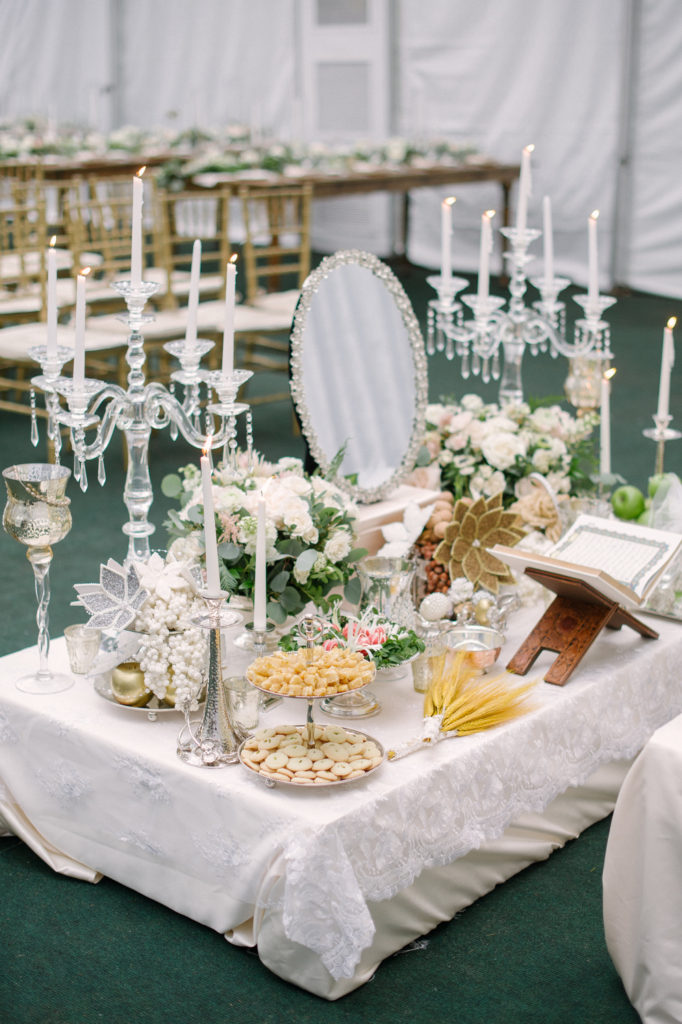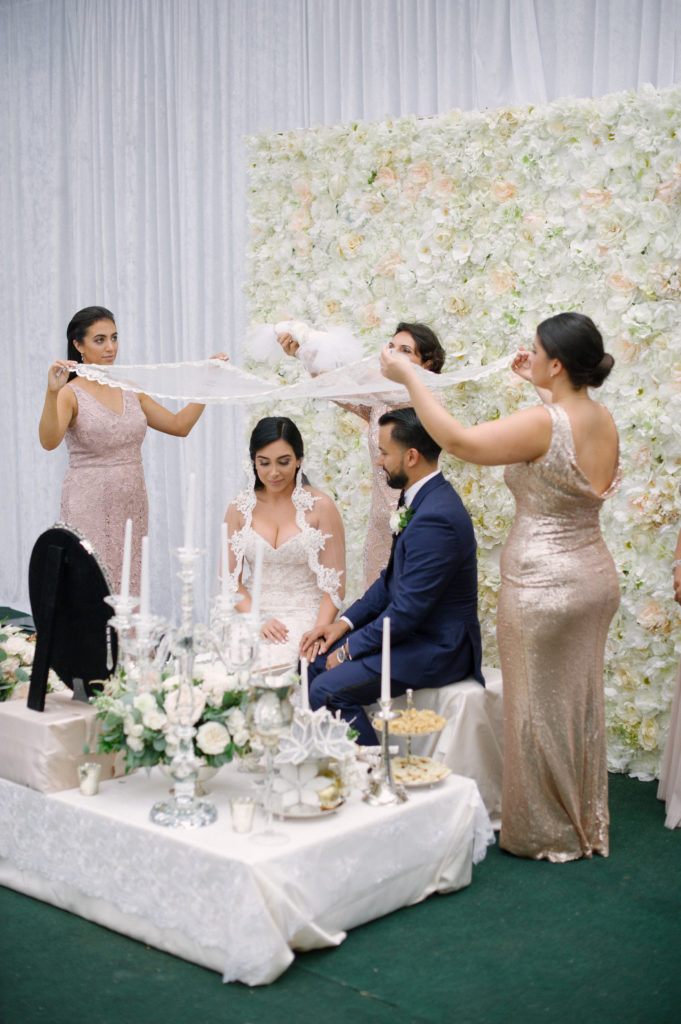The Sofreh Aghd
The Sofreh Aghd is a Persian Wedding Table, a “Table of Wedding” used in Persian Iranian weddings worldwide. Here in Miami , we help our clients make this elaborate floor spread process a total breeze. Each and every item is meant to bid happiness and prosperity to the newlyweds. Every special detail in our Persian Wedding Ceremony Tables is artfully curated and each item is carefully sourced to meet our clients’ vision and preference.

The Sacred Text
Items in the table range according to each client’s wishes, some of the most common items are:
- Mirror of Fate and two candelabras, symbols of light and fire.
- The Blessed bread, a specially made bread with calligraphy written on it.
- Heavenly fruits, such as pomegranate, grapes and apples
- Symbols of fertility, decorated eggs, almonds, walnuts and hazelnuts.
- The Sacred Text, a Bible, Q’uaran, the Avesta or Torah is placed in front of the couple on the spread.
- Coins, a bowl of silver or gold coins symbolizing prosperity and wealth.
- The Seven Pastries, for a sweet marriage, Toot (Persian marzipan), Naan-e Bereneji (rice cookies), Naan-e Badami (almond cookies) and Naan-Nokhodchi (chickpea cookie) are placed on the spread and traditionally served to the guests after the ceremony.

Mirror of Fate
A scarf or shawl made out of silk or any other fine fabric is held over the bride and bridegroom’s head, who are sitting by the Sofreh, this fabric must be held by a few unmarried female relatives (bridesmaids). Two sugar cones made out of hardened sugar are used during the ceremony. These sugar cones are softly ground together above the bride and bridegroom’s head by a happily married female relative (and/or maid of honor) throughout the ceremony to shower them in sweetness. The sugar drops in the held fabric, not on their heads.

Mother of the Bride showers bridegroom in sweetness
These traditions go back to the religion of pre-Islamic Iran despite their local and regional variations. Though the concepts and theory of the marriage have been changed by Islamic traditions, the actual ceremonies have remained more or less the same as they were originally in the ancient Iran culture. Although modern-day Iran is a multi-ethnic country, Iranian wedding traditions are observed by the majority of ethnic groups in Iran and neighboring countries and regions.
Wedding Planning & Decor: Hasel B. Designs
Photography: Katie Lopez Photography
Catering: Bill Hansen Catering
Flowers: Julia Rhode Designs
Venue: Villa Woodbine
info@haselbdesigns.com | C: 954.632.7771 | 100 Lincoln Rd, Miami Beach FL